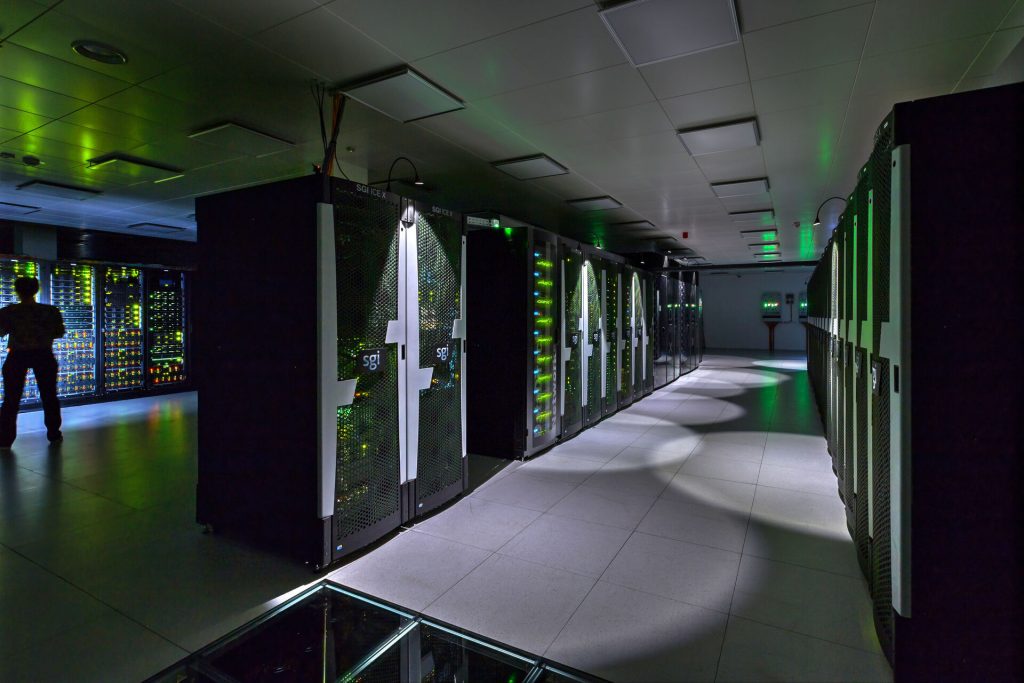There are fields of geophysics, that rely on numerical modeling or the analysis of huge datasets. With the help of supercomputing, we are able to model complex systems or make sense of large and complicated datasets. IT4Innovations (IT4I) is a Czech national research center at the Technical University of Ostrava, which operates supercomputing systems in the fields of high-performance computing, data analysis, and artificial intelligence.
Currently, three research teams use computational time at IT4I for their projects:

IT4Innovations Czech research center (foto: IT4I)
Christian Sippl: Harvesting seismic waveform data for microseismicity with deep learning approaches
There are thousands of small earthquakes (“microseismicity”) and fortunately only very few big ones. If microseismicity causes no trouble, does it mean, that it contains no useful information for us? The answer to this is obviously no. For instance, understanding microseismicity can yield important insights into the current state of subduction zones, where the strongest observed earthquakes occur.
Given the huge amount of available raw data, processing such events “by hand” is not feasible. Using an automated deep learning-based approach (combining existing and recently published algorithms into a single workflow), we retrieve large catalogs of small earthquakes from four subduction zones. This will form the base for several lines of further analysis (seismic tomography, statistical seismology and combined inversion with GPS data) to conduct a comparative study between these subduction regions.
Jan Burjánek: Modelling the influence of near-surface geology on 3D seismic waves propagation
Earthquake damage to houses as well as to infrastructure in industrial sites is something we can mitigate via anti-seismic structure design, re-enforcement of existing structures, or sophisticated urban projecting. However, for constructing the effective “buffer”, we need to model the earthquake scenario first.
Strong ground motions are generated in the earthquake source, propagate through the Earth’s interior and might be amplified few hundred or tenths meters below the Earth’s surface. The near-surface geology is thus the most critical point in terms of strong-ground motions and subsequent damage. However, we can model the effects of near-surface geology on the seismic wave propagation by numerical simulations. Therefore, it is possible to perform a large number of numerically simulated ground-shaking scenarios – earthquakes, potentially appearing in a respective region.
Ján Šimkanin: Thermochemically-driven convection and dynamos operating at low Ekman numbers (part III, follow up to OPEN-21-1 and OPEN-22-28)
The Earth’s magnetic field is generated by convective motions of an electrically conductive melt in the outer core and penetrates the surface of the Earth. These generation processes are called Geodynamo for short. On the surface, a large-scale, dipole-dominated field is observed. However, we have no direct information about the magnetic field in the core. For this reason, we model magnetohydrodynamic processes in the Earth’s core numerically. Numerical models produce magnetic fields that are close to the observed geomagnetic field. We are also able to reproduce its temporal changes, whether short-term or long-term ones (so-called secular variations). However, we cannot use parameters typical of the Earth’s core. So far, there is no supercomputer in the world that could solve a Geodynamo model with real values. As computers become more and more powerful, we are gradually approaching these values.
We regularly use IT4I’s facilities and their Open Access Grant Competition system.

